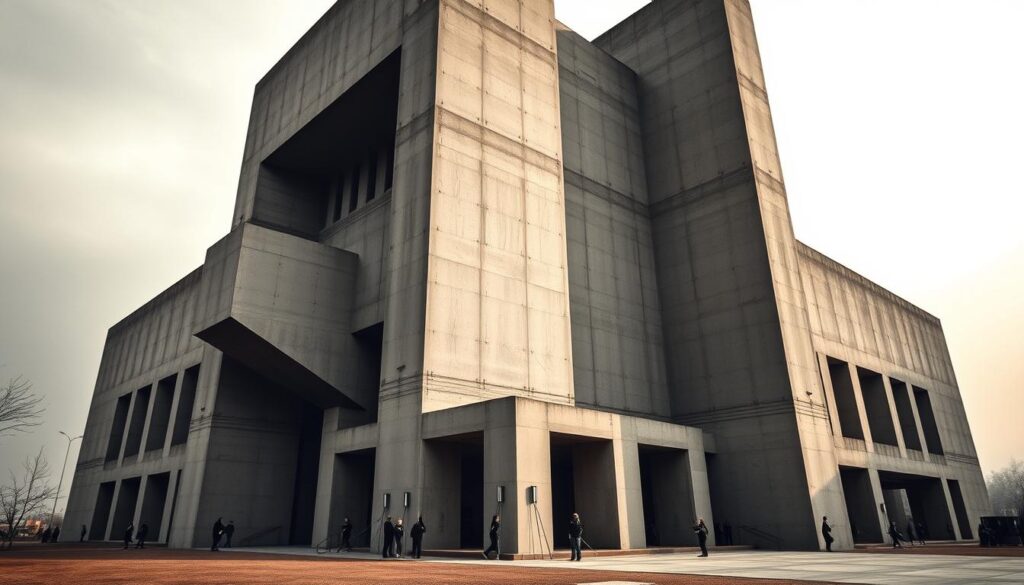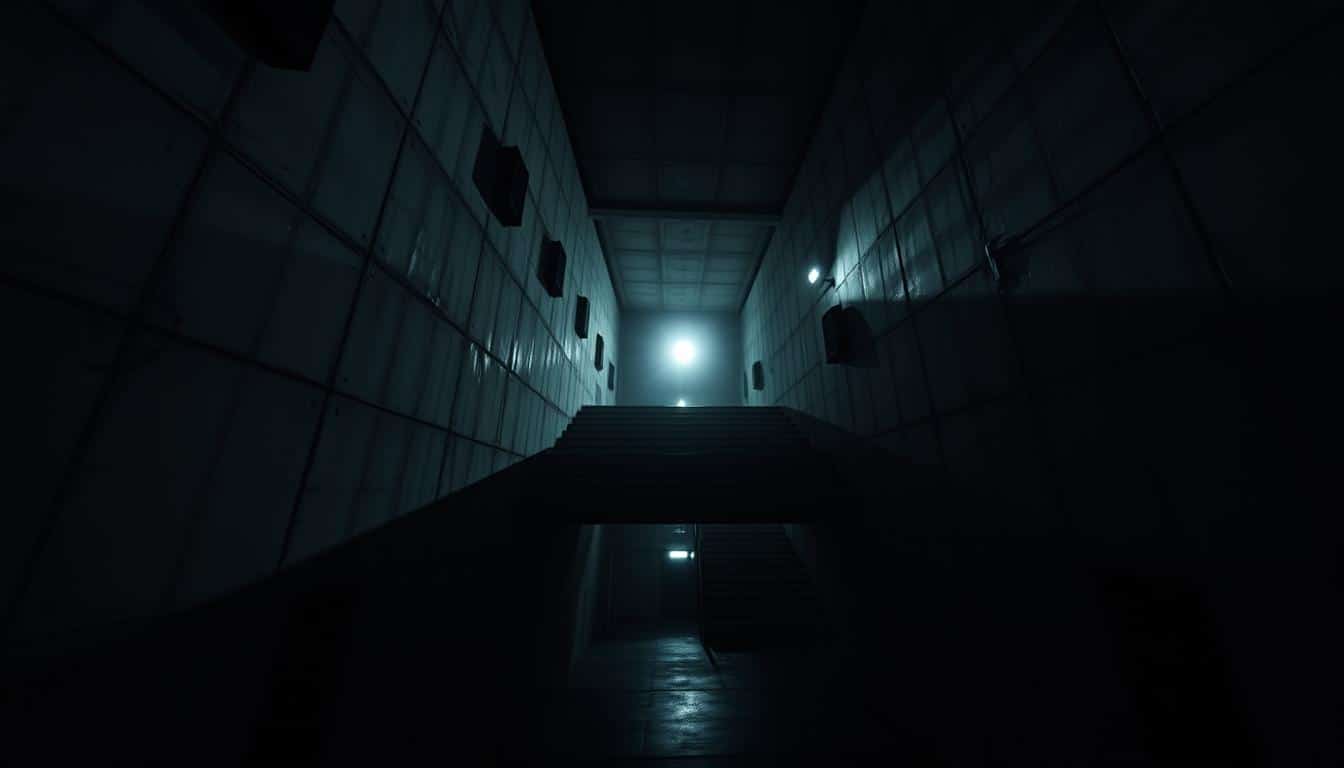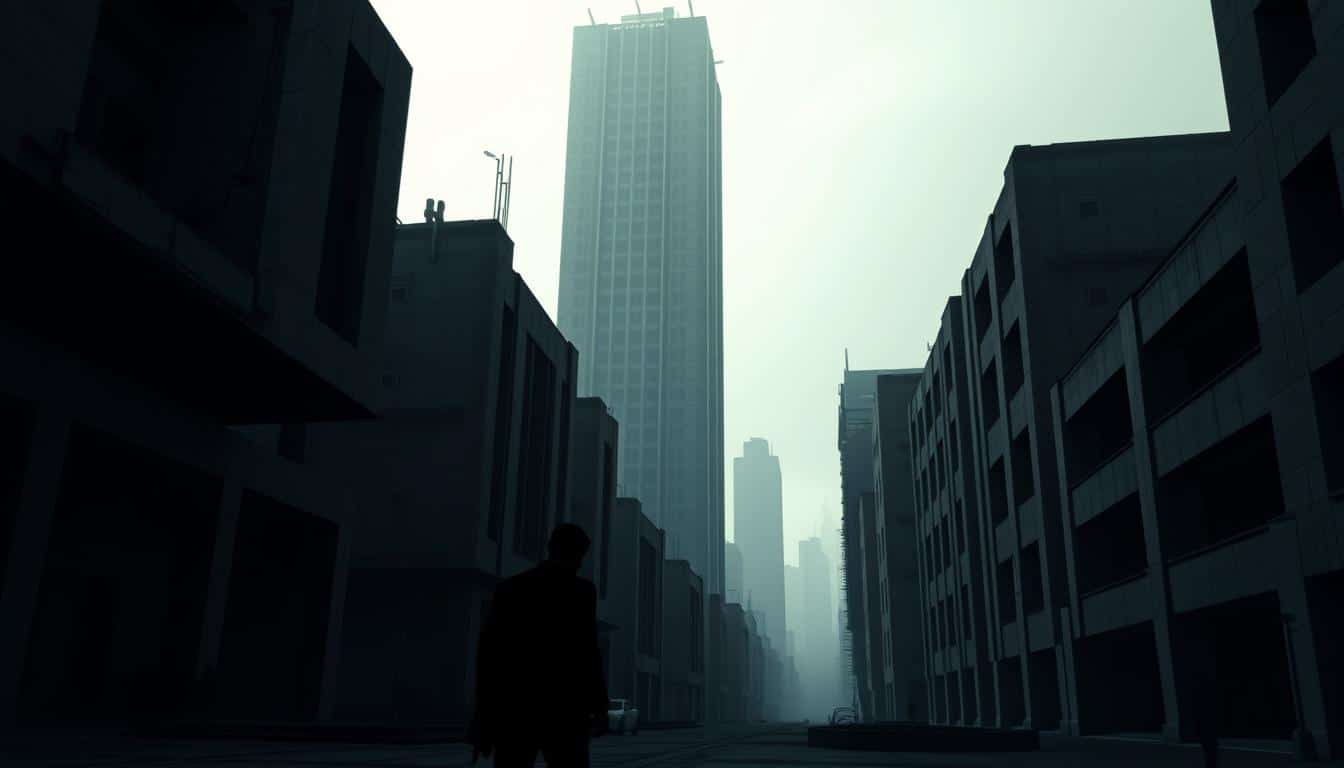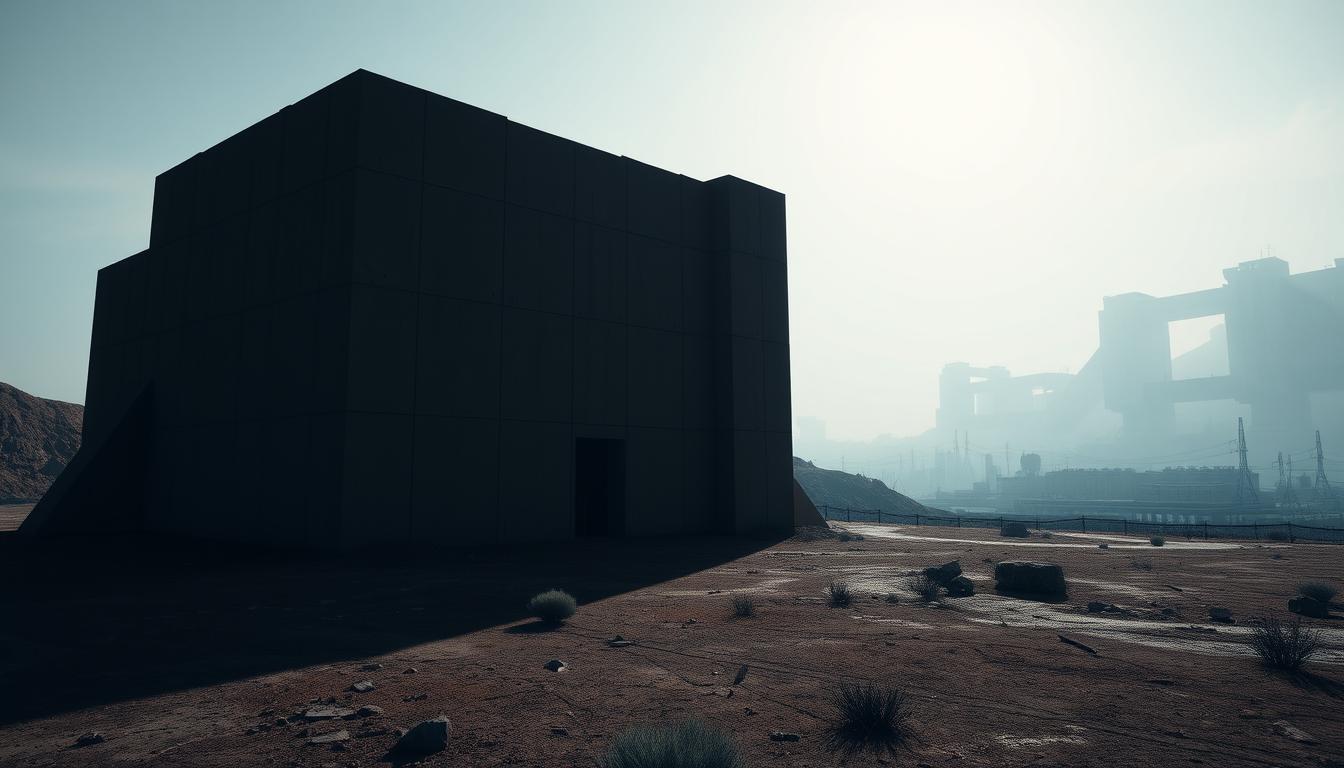Brutalist architecture stands out with its bold and simple style. It significantly boosts how we get lost in video games. This article will explore brutalism’s key features and how they enhance gaming. We’re diving into how architecture influences gaming experiences.
Through this exploration, we’ll see how brutalism’s vast structures and use of industrial materials make games more engaging. We’re also going to talk about how video game design benefits from brutalism’s unique traits. This reveals a deep story and feelings that gamers feel in these digital worlds.
Introduction to Brutalist Architecture
Brutalist architecture stands out with its bold, heavy looks and exposed concrete. Starting in the late 1940s, it aimed to move away from previous fancy styles. It preferred a more raw design that showed seriousness. This style gained popularity after the war, as cities needed cheap and strong materials for rebuilding.
This movement showcased the beauty of bare functionality and honesty. Buildings often show how they are put together. Brutalism chose simple looks and useful materials, making it perfect for schools and government buildings.

Exploring brutalism helps us grasp its deep ideas and lasting effects. It influences modern architecture and how we experience certain spaces. This style has a unique way of thinking about design.
Defining Brutalism in Architectural Terms
Brutalism is known for its raw materials and simple design. It comes from “béton brut,” which means “raw concrete.” This movement values functionality over looks.
The style features big, bold buildings that do more than just look good. Brutalism shows off the bare bones of a structure. It skips fancy decorations for a straightforward, honest look.
Le Corbusier’s Unité d’Habitation is a famous example. It shows how brutalism combines practicality with striking design. The style breaks from tradition, offering a unique take on architecture.
The Historical Context of Brutalist Architecture
Brutalism came about after World War II, showing the tough times that influenced it. It started with the need for simple, cost-effective building ways during city rebuilds. The goal was to make buildings that were not just useful but also showed strength and endurance.
This style was about making affordable homes and public places during hard economic times. It’s known for its bold, raw look which was different from earlier, more ornate styles. After the war, brutalism was a way to focus on what buildings did more than how they looked.
When brutalist buildings became common in cities, they made people think about society, the economy, and life in these spaces. By understanding these topics, we can better appreciate brutalism and its effects today, like in video game design.
Impact of Brutalist Buildings on Player Immersion
Brutalist architecture deeply affects how players feel in a game. Its bold, raw looks create a strong feeling, changing how players see the game world. This happens because of two main things: how raw materials make us feel and how big the game spaces are.
The Emotional Response to Raw Materials
Materials like concrete and steel in Brutalist buildings stir deep feelings. These elements make the game world feel more real and touching. They make players connect more with the game. Key factors for these feelings are:
- Textures that make you think of touch and weight.
- Bold shapes that make you see things differently and feel alone.
- Color choices that help tell the story through mood and tone.
Creating Atmosphere Through Architectural Scale
The size of Brutalist buildings can change how players see their game world. Tall, imposing structures make players feel small and amazed, making the game more immersive. The way players relate to the game world becomes very different. They explore in ways that feel big yet limiting. Important design parts that cause this include:
- Huge shapes that stand out in the game world.
- Open areas that make you want to explore but also make you scared of what’s not known.
- Differences in size that show how small the player is in big game worlds.
Brutalist Aesthetics in Video Game Design
Video games have started to use brutalist aesthetics, bringing the raw, unrefined beauty of this style into virtual worlds. They often use materials like concrete, glass, and steel. These elements combine to make immersive worlds that feel both new and oddly familiar to players.
Utilizing Industrial Materials for Immersive Worlds
Brutalist aesthetics in games mean using materials like concrete and glass to create real-feeling worlds. This mix of concrete’s starkness with glass’s sleekness adds to the game’s look and feel. It makes players feel part of the world in a way that’s real and makes you think.
Level Design Inspired by Brutalist Ideals
Games inspired by brutalist architecture often have minimalist level design. This design is simple and functional, helping players move through spaces like in the real world. This careful design can challenge players and make them appreciate the game’s world even more, adding depth to the story and the gameplay.
Case Study: Control and the Oldest House
Remedy Entertainment’s game, Control, brings brutalist architecture alive with the Oldest House. This building acts as a unique character, combining eeriness and strong structures. It offers players a world where design changes, showing immersive architecture at its best.
The Oldest House changes how players see gameplay. Its unique layout and changing spaces make them see space and control differently. The architecture helps tell a story, making players feel more connected to the game world.
This study shows how architecture in Control adds beauty and draws players in. The Oldest House stands out in gaming, thanks to Remedy Entertainment’s vision. It shows how important architecture is in video games.
Brutalism’s Influence on Gameplay Mechanics
Brutalism changes how games work by adding unique navigational challenges. Its different designs make players adjust how they move, needing more focus. This makes the game more intense and interesting.
Players face tough layouts in brutalist architecture. This creates a thrilling sense of adventure. It pulls them further into the story of the game.
Navigational Challenges in Brutalist Spaces
Brutalist spaces make it hard to move around easily. They have sharp corners, big areas of concrete, and uneven depths. These features make exploring fun and rewarding for those who keep trying.
This type of architecture makes players solve problems creatively. As they get better at understanding the space, they enjoy the game more.
Architectural Storytelling in Game Environments
Architectural storytelling is key in games with brutalist styles. The settings tell a story that fits with the game’s main plot and ideas. This adds depth.
Designers mix the game’s story with the environment. This makes players think about where they are. As they move through these spaces, they feel more connected to the game. It makes the game more exciting.
The Rise of Video Game Brutalism
Video game brutalism is making a big comeback. Developers are adding its unique look and ideas to their games. This move shows a clear shift in game design. Players now find the simple, bold looks of brutalist architecture exciting. The strong shapes and plain materials create worlds that people get really into.
Brutalism in gaming is more than just looks. It creates feelings and special moments for players. Players like the rawness and truth of these game worlds. They’re different from the usual, more finished-looking games. Using brutalist ideas makes players want to look around and get involved. This sparks curiosity and deep thought.
Using brutalism in games does more than make them look good. It adds deep meaning to the gameplay. It invites players to think about space and how it’s used. As this idea grows, game makers keep finding new ways to draw players in. They focus on making games that not only feel real but also make you think.
Philosophical Implications of Liminal Spaces
Liminal spaces are intriguing thresholds that show transition and uncertainty. When mixed with brutalism, they offer rich experiences in video games. This blend lets players explore areas that challenge their views on existence and how they see things.
The simplicity of brutalist architecture makes moving through in-between places more intense. Players may find themselves in empty halls or lonely plazas, sparking deep thought. These moments make us question the line between what’s real and what’s not, blending two worlds together.
Exploring these areas, players dive deep into the story. The minimalist but striking look of brutalism makes feelings of being alone and thinking deeply stronger. This leads to meaningful talk about life in today’s world.
Conclusion
Exploring brutalism in gaming shows its big impact on how gamers feel and engage. Architectural design does more than look pretty; it changes how we feel and move in game worlds. Brutalist buildings make game places feel real, pulling players deeper into the story and gameplay.
Looking forward, game architecture has a bright future, especially with tech getting better. Things like real-time rendering and better physics simulations will let brutalist architecture in games become even more engaging. As game makers explore these new techs, we might see more games using brutalist styles, leading to new kinds of gameplay.
To wrap up, the mix of brutalist architecture and gaming is an exciting area to explore. Raw and functional designs captivate players and break new ground in storytelling. As gaming grows, brutalism will keep influencing both the virtual worlds we explore and the future look of game architecture.



